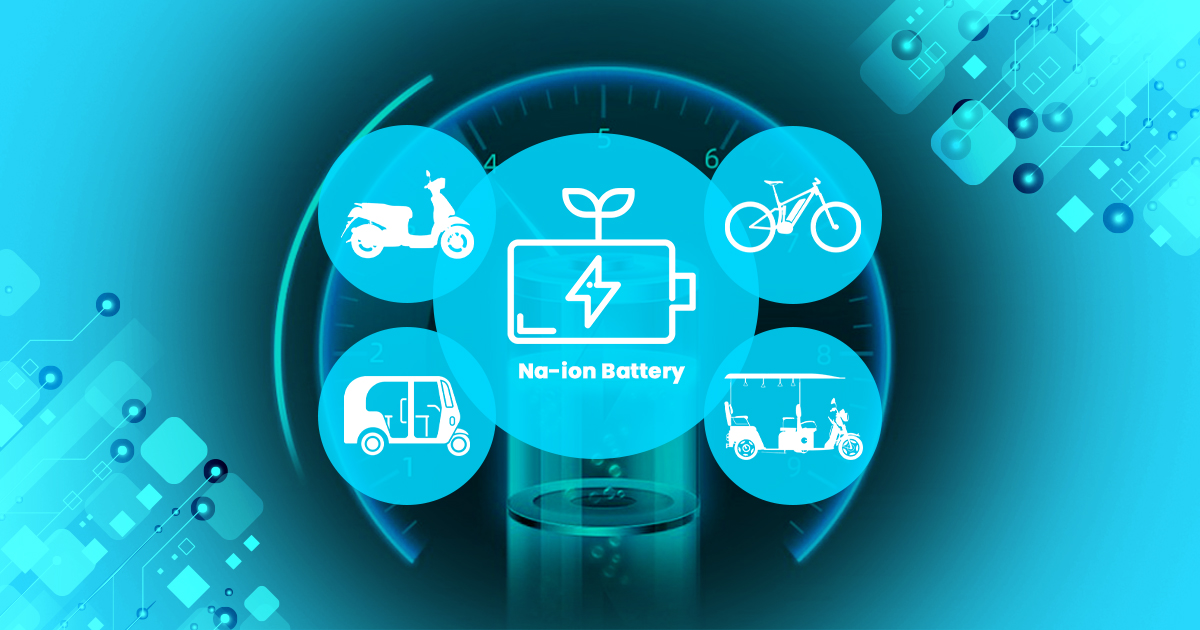Light Electric Mobility, a rising star in the mobility sector which holds the key to lightening the load on the environment. Light mobility refers to modes of transportation that are typically smaller in size and designed for short-distance travel within urban or suburban environments. These modes of transportation include electric scooters, bicycles, mopeds, skateboards, and similar vehicles. But with this growth in light mobility comes a challenge: ensuring these vehicles are powered sustainably and efficiently and Sodium-ion batteries could be the answer.
The Light Mobility Boom in India:
The Indian light electric vehicle (LEV) market is experiencing explosive growth. A report by Edelweiss Financial Services predicts the market will reach a staggering INR 1.9 trillion (USD 24 billion) by 2030. This surge is driven by several factors:
- Rising fuel costs and air pollution: LEVs offer a clean and cost-effective alternative to gasoline-powered vehicles, addressing both economic and environmental concerns.
- Government support: The Indian government is actively promoting electric vehicle adoption through subsidies and policies.
- Growing demand for last-mile connectivity: LEVs are ideal for navigating congested urban environments and providing efficient last-mile connectivity solutions.
Previously dominant in the renewable energy industry, lithium-ion batteries now warrant reconsideration regarding their sustainability. Are they truly environmentally sustainable? Several key limitations are:
- Import Dependence: India heavily relies on lithium imports, making it vulnerable to price fluctuations and supply chain disruptions.
- Cost Barriers: Lithium-ion batteries are expensive, hindering the affordability of LEVs for a large segment of the Indian population.
- Lithium Mining & Waste Management Concerns: Lithium requires mining and the lack of established lithium-ion battery recycling infrastructure poses environmental challenges.
8 Reasons Why Sodium-Ion Batteries Are Perfect for Light Mobility
Here’s why sodium-ion batteries are perfectly suited for this role:
- Abundant Resources: Unlike lithium-ion batteries, sodium-ion batteries rely on sodium, a widely available element. This reduces dependence on limited resources and potential supply chain disruptions.
- Cost-Effectiveness: Sodium is considerably more economical than lithium, paving the way for sodium-ion batteries to become a more cost-effective choice for manufacturers. This could potentially translate into reduced prices for consumers. Given that light mobility is predominantly utilised by low and middle-income groups, keeping costs in check is paramount.
- Sustainable Choice: Sodium-ion batteries are commonly regarded as safer alternatives to lithium-ion batteries. They present fewer environmental issues during both production and disposal because they do not require rare earth materials. Life Cycle analysis indicates that sodium ion batteries have a carbon footprint 60 times lower than that of lithium-ion batteries.
- Faster Charging Potential: Sodium-ion battery prototypes boast faster charging times without cell degradation. Also Its thermal stability contributes to reduced risks of thermal runaway, a phenomenon where the battery overheats and triggers a chain reaction of chemical reactions. This characteristic makes sodium-ion batteries less prone to catastrophic failures compared to lithium-ion batteries. This translates to quicker turnaround times for shared mobility solutions like e-scooters.
- Right Power for the Job: LEVs don’t require the massive energy storage capacity of electric cars. Sodium-ion batteries offer sufficient power for light mobility applications, making them a good fit for this specific need.
- Reduced Fire Risk: Sodium-ion batteries, with their lower reactivity compared to lithium, reduce the risk of fire and explosion hazards, particularly in situations of extreme conditions or damage. In light mobility applications, where batteries are exposed to ambient surroundings, sodium-ion batteries offer resilience. Specifically in countries like India, where road temperatures can reach 60°C, sodium-ion batteries can withstand temperatures up to 65°C. This stands in contrast to lithium batteries, which have been involved in numerous fire accidents in recent years.
- Future-Proof Technology: As research progresses and production scales up, sodium-ion battery performance is expected to improve, making them even more competitive in the light mobility space.
- Alignment with India’s Needs: For countries like India, with a growing light mobility market and a desire to reduce dependence on imported resources, sodium-ion batteries offer a self-reliant and sustainable solution.
Light Mobility emerges as a crucial element in bridging India with Bharat, extending its reach into rural areas. Simultaneously, India is transitioning towards renewable energy, with the government embracing green technology. Sodium ion has the potential to be the powerhouse behind this transformation, linking energy solutions with eco-friendly mobility.
Uneverse is embracing this transformation by leveraging Sodium-Ion technology for energy storage, powering e-mobility and consumer durables. In our own way, we are living the vision of a greener India. Will you join us to bring the change?

